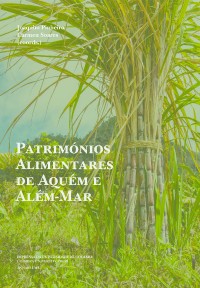Please use this identifier to cite or link to this item:
https://hdl.handle.net/10316.2/39653| DC Field | Value | Language |
|---|---|---|
| dc.contributor.author | Bossolino, Isabella | |
| dc.date.accessioned | 2016-10-12T14:03:49Z | |
| dc.date.accessioned | 2020-09-08T16:58:17Z | - |
| dc.date.available | 2016-10-12T14:03:49Z | |
| dc.date.available | 2020-09-08T16:58:17Z | - |
| dc.date.issued | 2016 | - |
| dc.identifier.isbn | 978-989-26-1190-7 | |
| dc.identifier.isbn | 978-989-26-1191-4 (PDF) | |
| dc.identifier.uri | https://hdl.handle.net/10316.2/39653 | - |
| dc.description.abstract | Honey, like salt, wine and oil, is one of the main foods of the ancient world: it has been, since prehistoric times, the most used sweetener in the Mediterranean. In this basin, in fact, there are several areas of production, but, among these, one of the most famous is certainly the area of Mount Hymettus in Attica. Famous in antiquity, Hymettus honey is a production of excellence that is still much appreciated. Some interesting discoveries, since the 70s, allowed the archaeological validation of literary sources, highlighting places of production active from the classical to the Byzantine period. Index Fossil of these investigations are clay beehives, mainly horizontal, preserved in many sherds that are not always easy to identify. Thanks to the pioneering research of J. E. Jones and the great encyclopedic work on beekeeping of E. Crane, serious attention has been paid over the years to the findings that could suggest honey production in areas that are particularly significant such as Attica, but a work that gathers all the information available, especially those of the most recent excavations related to major projects such as the Athens metro and the construction of the new airport at Spata, near Mount Hymettus, has been lacking. This article aims to offer an overview of the honey production sites in the city of Athens and Attica, identifying the geographic areas most affected by the phenomenon and the different chronological periods. This paper aims to also investigate the ancient production technique, thanks to the comparison with other traditional areas of production and several contemporary examples from neighboring islands such as Andros and Naxos. | eng |
| dc.language.iso | eng | - |
| dc.publisher | Imprensa da Universidade de Coimbra | por |
| dc.publisher | Annablume | por |
| dc.relation.ispartof | http://hdl.handle.net/10316.2/39609 | por |
| dc.rights | open access | - |
| dc.subject | Archaeology of production | eng |
| dc.subject | honey | eng |
| dc.subject | Attica | eng |
| dc.subject | Athens | eng |
| dc.subject | Mount Hymettus | eng |
| dc.title | “<Μέλι> πρωτεύει τὸ Ἀττικὸν καὶ τούτου τὸ Ὕμήττιον καλούμενον” honey production in Attica, an antique excellence | por |
| dc.type | bookPart | por |
| uc.publication.collection | DIAITA: Scripta & Realia | por |
| uc.publication.firstPage | 499 | - |
| uc.publication.lastPage | 519 | - |
| uc.publication.location | Coimbra | por |
| dc.identifier.doi | 10.14195/978-989-26-1191-4_24 | - |
| uc.publication.digCollection | PB | por |
| uc.publication.orderno | 24 | - |
| uc.publication.area | Artes e Humanidades | por |
| uc.publication.bookTitle | Patrimónios alimentares de aquém e além-mar | - |
| uc.publication.manifest | https://dl.uc.pt/json/iiif/10316.2/39653/205760/manifest?manifest=/json/iiif/10316.2/39653/205760/manifest | - |
| uc.publication.thumbnail | https://dl.uc.pt/retrieve/11087547 | - |
| uc.publication.parentItemId | 54693 | - |
| uc.itemId | 69165 | - |
| item.fulltext | With Fulltext | - |
| item.grantfulltext | open | - |
| Appears in Collections: | Patrimónios alimentares de aquém e além-mar | |
Files in This Item:
| File | Description | Size | Format | |
|---|---|---|---|---|
| honey.pdf | 9.49 MB | Adobe PDF |  |
Items in DSpace are protected by copyright, with all rights reserved, unless otherwise indicated.
